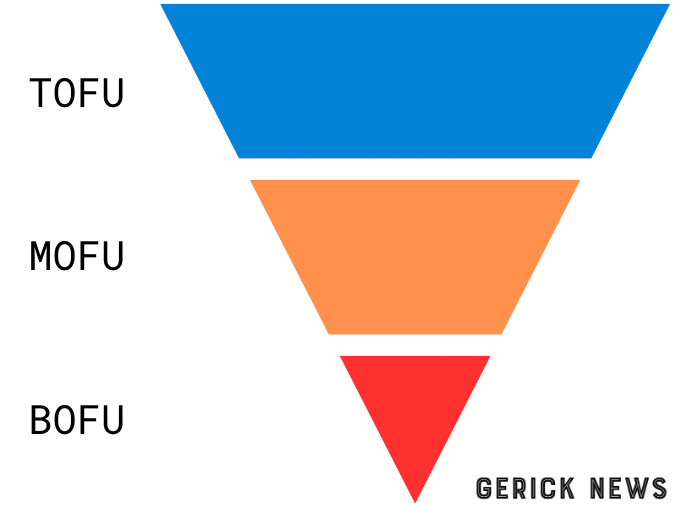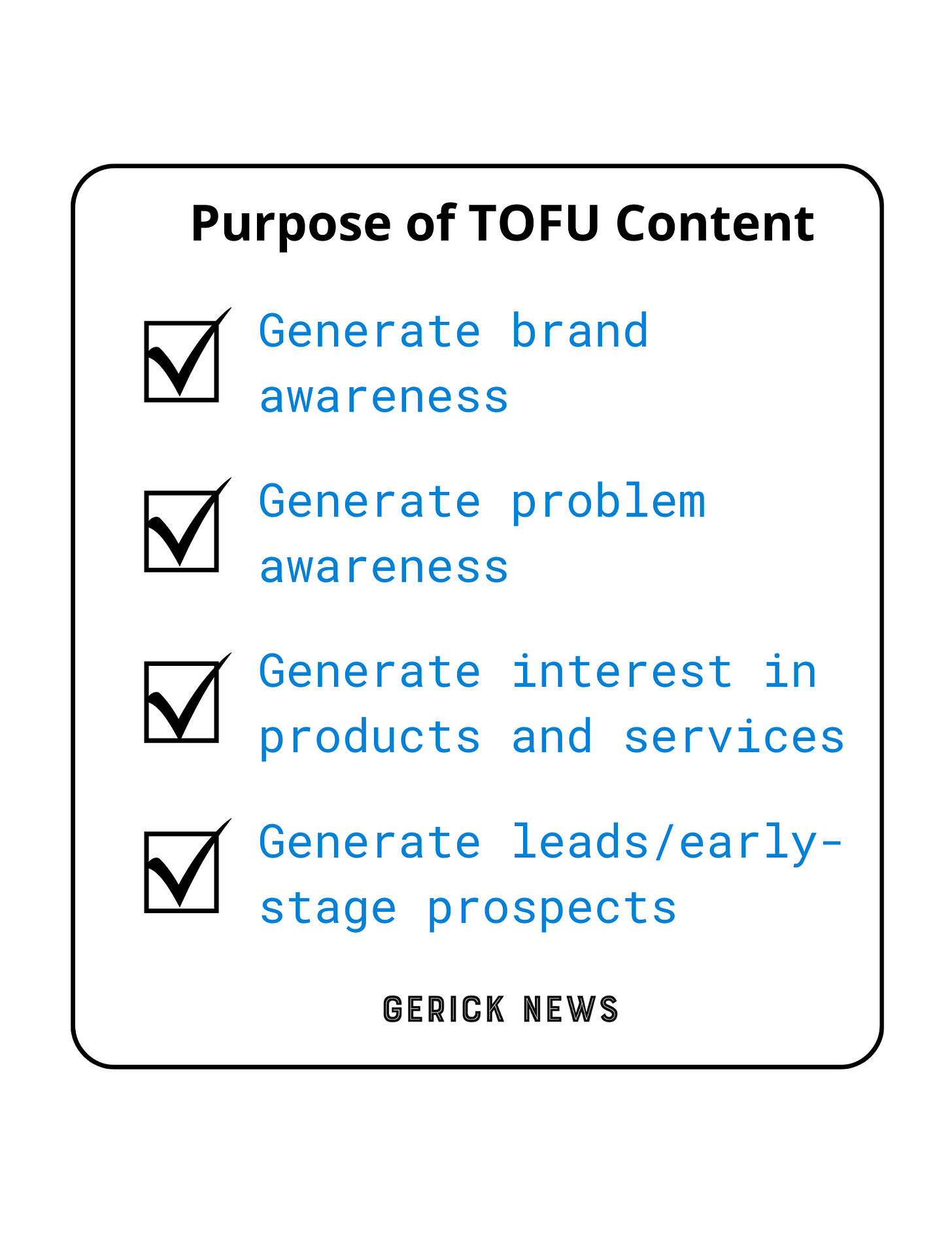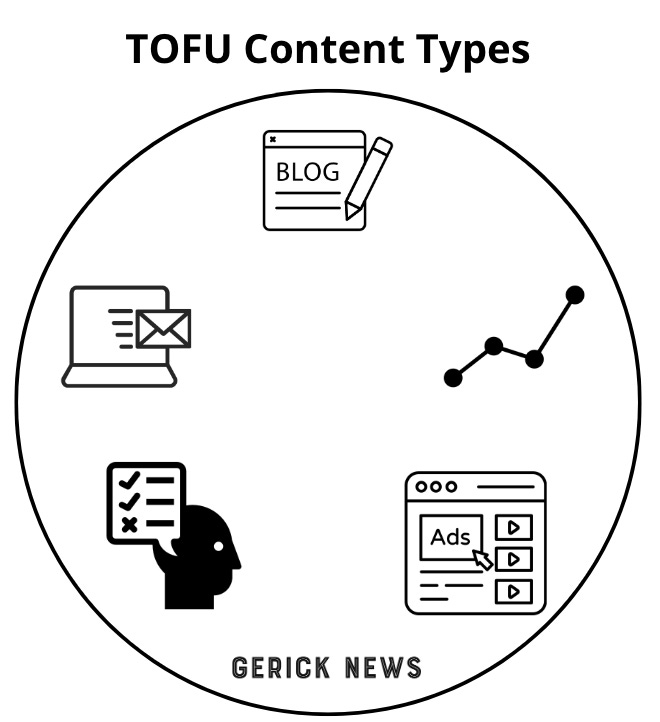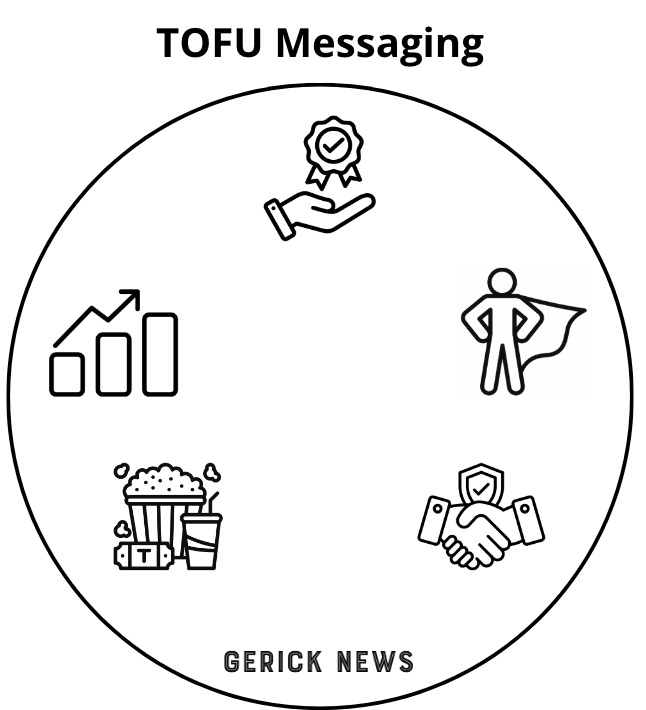What is TOFU Content?
(It's not a vegan food)
Welcome to Part I of Edition No. 72 of my weekly newsletter, providing practical analysis in the world of digital content strategy.
Note About Newsletter Format
tl;dr: I’m updating the format for both weekly emails. I also extended all paid subscriptions by a month for free.
As I have done multiple times in the past, I am updating the format. The goal is to make it easier to read and more predictable.
Going forward, here’s how the two editions each week will look:
Part I
A practical, tactical content strategy walk-through. To get an idea, check out this week’s write-up on top-of-funnel content.
Part II
Top headlines (still subjective, by nature) broken into the categories I know most about:
GA4
SEO
Social media
Of these three, I’ll spend the most time going deeper on GA4, since that’s what my course is dedicated to.
There may be weeks where, depending on my workload, I don’t get both editions out.
As always, I’m open to feedback on all this.
What is Top-of-Funnel Content?
The inverted pyramid – leading stories with the most important information and adding details from there – was foundational to my work as a journalist. It’s a tactic I use for non-news writing as well.
As I transitioned the last few years to working with B2B (especially SaaS) clients, I learned about a different kind of pyramid. Well, actually it’s a funnel, but they’re the same shape in 2D.
Just as the inverted pyramid can help marketers improve their writing, I believe the content marketing funnel also has applications for journalists. Especially if you’re trying to get readers/viewers to convert to a paid membership or sign up for a newsletter.
There are three main parts to this funnel – top, middle and bottom – and today I’m going to talk about what I have learned the past six years about the first of those three.
You don’t need marketing expertise to grasp the funnel concept. At the top, where the funnel is widest, the maximum amount of possible clients/customers fit inside. As you work your way toward the bottom, the funnel becomes more and more narrow until a smaller percentage of your original prospects make it through, or convert.
The goal, of course, is to maximize the number of prospects who make it all the way through. For various reasons, though, – time, budget, product-market fit – the majority of initial entrants will drop off before converting.
(The stages at which they drop off are called “leaks” in your funnel. Once you identify them, you want to plug them so users can move further and further down without dropping off again.)
Let’s talk about what I consider the most important considerations of TOFU content.
Contents
What is the Purpose of Top-of-Funnel Content?
What Kinds of Content Can Be Used?
What is the Messaging Focus?
What are the Distribution Channels?
What are the KPIs?
What is the Purpose of Top-of-Funnel Content?
Generate Brand Awareness
This is about making people aware you exist. Before you ever try to sell someone your product or service, they need to know who you are.
This is the first step in building trust. If you were buying a pair of tennis shoes and you had a choice between New Balance, which you previously bought, and some new brand you had never heard of, who’s more likely to get your business?
Putting all other factors aside, probably NB.
While it may take time to build up to the level of trust competitors have earned, the goal here is to get on people’s radar.
Generate Problem(s) Awareness
Your potential customer may not even be aware they have a problem. If that’s the case, you’ll have a hard time selling them your product.
Here’s one way you might generate interest in your shoes:
Did you know that most athletic shoes are made of non-renewable products that quickly wear out. Shoes made with vibranium last five times as long and cost the same as the outdated technology you’re likely wearing.
At this point, you haven’t even mentioned your brand, but you have introduced a problem for which you already have the answer.
Generate Interest in Products/Service
Alongside these problems, you want to present the specific solutions you offer. Since customers at this stage are just getting to know you, you don’t want to go for a hard sell. For example:
At Walkanda, we source our vibranium straight from the jungle and own our factories, which is why we guarantee the quality of our footwear.
The fact that you sell shoes is implied – no need to ask for a sale here, though.
Generate Leads/Early-Stage Prospects
All the aforementioned purposes work together to create leads. That is, people who are a good fit for your product/service. Whether they’re “in the market” now or might be in the future, you have warmed them up to whatever you’re selling.
Now, when they need new tennis shoes, they might give you more serious consideration alongside an established competitor like New Balance.
What Kinds of Content Can Be Used?
There are many formats you can use for TOFU content. Whichever one you choose, keep the four core purposes in mind. Here are some of the more popular ways to get started, and some notes on each:
Blog Posts
Short- or medium-form content to show off expertise and brand voice
Great to attract SEO traffic
Can be repurposed and/or linked to in other formats (i.e. tweeting a link to your latest story or using a pull-quotation for an Instagram image)
Newsletters
A great way to capture contact information while providing useful content
Infographics
Easy to consume in a short amount of time
Great for sharing facts, how-tos or summaries of longer pieces of content
Quizzes/Evaluations
Potentially more fun while also educating
Gives you the chance to frame questions in the form of problems the user didn’t know they had
Upon completion, you can give a score that qualifies them for your products/services
Ads
If you have the budget, this tactic can just about guarantee you’re getting your brand and product in front of the right audience
Other Notable Formats
Website (non-blog)
eBooks
White papers
Non-digital formats
What is the Messaging Focus?
This should be closely aligned with your purposes. Think of your purposes as what you’re trying to accomplish with the content and your messaging as how you accomplish it.
For example: If your purpose is to generate brand awareness, you can create an About Us section on your website talking about your brand/publication.
Here are some more specific aspects of messaging:
Clarify Your Offerings
What do you do? This should be clear as day to anyone who visits your website or contacts your team.
Don’t just say you’re a “local news source.” Say that you “cover daily crime, politics, sports, education, business and more for the St. Louis metropolitan area.”
Remember, at the TOFU stage, people don’t even know who you are. One way they can get to know you is by telling them what you do.
Make Them the Hero
Telling potential customers what you do is important, but if you stop there, you’re making it all about you. You’re making yourself the hero, in other words.
What you really want to do is make them the hero. (For more on this concept, I recommend “Building a Story Brand” by Donald Miller.)
While talking about your offerings is important, you also want to be clear about how someone can benefit from them. A more general message might be, “Be the first to know what’s happening in your community.” A more targeted one might be, “Be among the first parents to know how your child will be affected by St. Louis County Schools redistricting.”
You don’t talk about how great you coverage is, you talk about how the reader will benefit from your coverage. More, how it will make their lives better.
Offer Valuable Info
This is why news websites have free previews before you hit a paywall. How are you going to gain a buyer’s trust – in any industry– if you don’t provide them some value first?
Going back to the shoe example, if you’re buying sneakers in Dick’s, wouldn’t you first try them on and walk/jog around that little track to make sure they’re comfortable?
Here’s an even better question: Have you ever bought something without trying it just because someone told you, “Trust me; it’s really good!”?
Don’t expect your first-time customers to, either.
Entertain
It’s important to stay on brand in this step, but it’s also a way to differentiate yourself.
Think of the best commercials you have ever seen. Do you remember them because someone told you what products they sold and how much they cost? Or do you remember them because they were funny or emotional or told a story?
When you’re talking about your products, don’t talk about your products. Tell a story about them that will hook your next potential customer and make them think of you next time they’re considering a news subscription, or whatever you’re selling.
Build Trust
This goes hand-in-hand with the previous point.
If you get someone to go straight from TOFU content to conversion in the same session, you have hit the jackpot.
More often, though, you have to nurture them down the funnel.
They might find a piece of content through a Google Search. A few days later they might see one of your ads and decide to follow you on social media. The next week, they see one of your posts on their Instagram feed and like it.
Now, when they’re ready to buy the product you’re selling and need to choose between you and the competition, you’ll be at or near the top of their list. That’s when BOFU content comes into play, which is a topic for another time.
If you don’t first build trust, though, you’re going to have a really difficult time getting the user any further down the funnel, let alone to a conversion.
Keep reading with a 7-day free trial
Subscribe to Gerick News(letter) to keep reading this post and get 7 days of free access to the full post archives.





